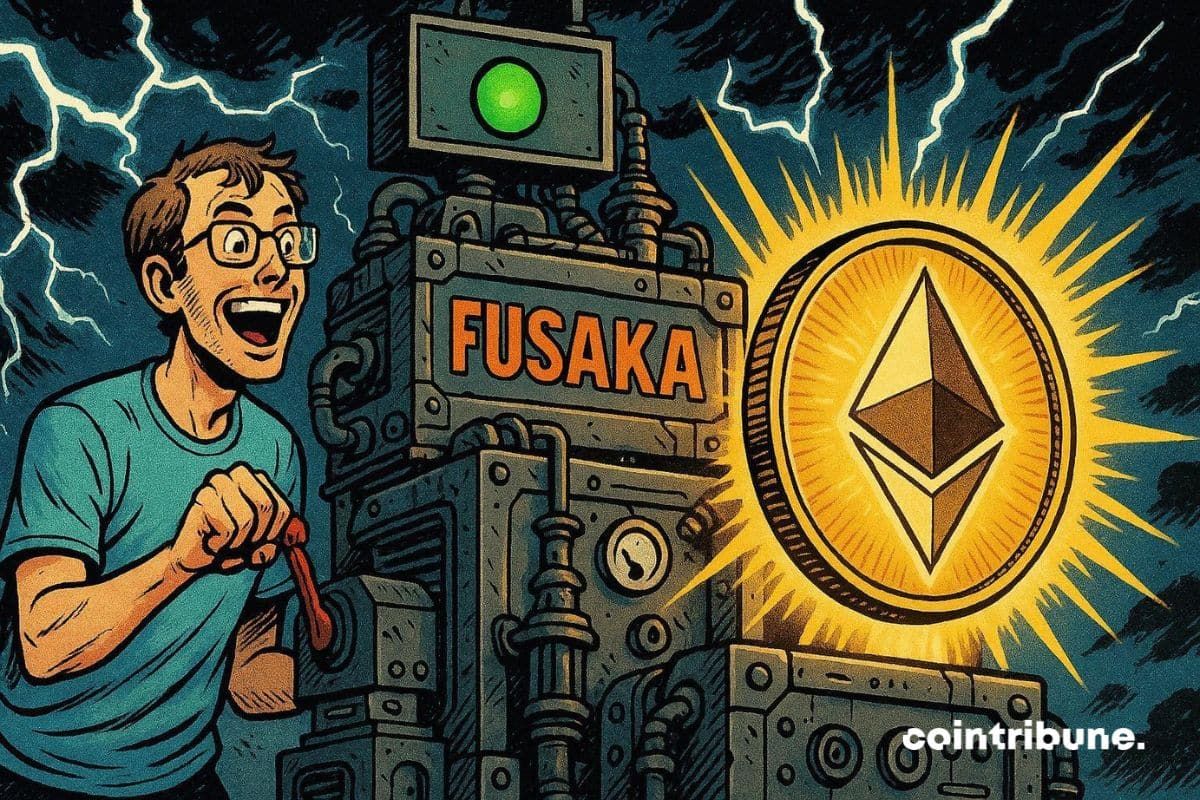The Emergence of Spatial AI: How ROVR's Open Dataset Is Disrupting Autonomous Systems and Unlocking New Market Opportunities
- ROVR Network, a DePIN, leverages decentralized contributors and hardware to collect centimeter-level geospatial data for spatial AI development. - Its 1TB open dataset with LiDAR, RGB, and GPS data offers a scalable, cost-effective alternative to proprietary HD mapping for autonomous systems. - Strategic partnerships with automotive suppliers and Paris PoCs validate ROVR's commercial viability in training AI for autonomous driving and robotics. - With $50B DePIN market potential by 2030 and token-driven
The rise of Spatial AI—a field focused on enabling machines to perceive, interpret, and interact with the physical world—has become one of the most transformative forces in technology. At the heart of this revolution lies the need for high-quality, human-centric geospatial data. Enter ROVR Network, a Decentralized Physical Infrastructure Network (DePIN) that is redefining how such data is collected, shared, and monetized. By leveraging a decentralized network of contributors and cutting-edge hardware, ROVR is not only democratizing access to real-world data but also accelerating the development of next-generation AI systems. For investors, this represents a unique opportunity to capitalize on the convergence of DePINs, AI, and the trillion-dollar autonomous systems market.
The DePIN Revolution: A New Paradigm for Data Infrastructure
Decentralized Physical Infrastructure Networks (DePINs) are reshaping industries by replacing centralized, proprietary models with community-driven, open-source alternatives. These networks incentivize individuals and organizations to contribute physical infrastructure—such as sensors, hardware, or data—via token-based economies. ROVR exemplifies this model by deploying a global network of over 3,500 devices, including its TarantulaX and LightCone units, to collect centimeter-level geospatial data. This data is anonymized and made available through the ROVR Open Dataset, a 1TB repository of synchronized LiDAR, RGB video, IMU, and RTK GPS data.
The significance of this approach cannot be overstated. Traditional HD mapping for autonomous vehicles relies on expensive, proprietary datasets from companies like Waymo or HERE Technologies. ROVR's decentralized model, however, offers a scalable, cost-effective alternative. By crowdsourcing data collection, ROVR ensures continuous updates and geographic diversity, critical for training AI models to generalize across environments. This is particularly valuable for applications like autonomous driving, robotics, and digital twins, where edge cases and real-world variability are paramount.
ROVR's Open Dataset: A Catalyst for Spatial AI Innovation
The ROVR Open Dataset is more than just a collection of raw data—it's a foundational resource for training AI systems to understand human behavior in dynamic environments. Unlike machine-vision-centric datasets, ROVR's data captures the world as seen by human drivers, including interactions with pedestrians, cyclists, and unpredictable road conditions. This human-centric perspective is essential for developing AI that can predict and respond to real-world scenarios, a key requirement for Level 4 and Level 5 autonomous vehicles.
Moreover, ROVR's dataset is designed for scalability. With over 20 million kilometers of road coverage and plans to expand to 10,000 TarantulaX and 1,000 LightCone units by year-end 2025, the network is poised to generate a dataset rivaling or exceeding the Waymo Open Dataset in size and diversity. Future enhancements, such as human-annotated 2D/3D bounding boxes and semantic labels, will further solidify its role in training AI for path planning, SLAM (Simultaneous Localization and Mapping), and spatial reasoning.
Market Dynamics: DePINs as a $50 Billion Opportunity by 2030
The DePIN sector is on a trajectory of exponential growth, driven by the need for decentralized infrastructure in telecommunications, energy, and data storage. According to Messari, the total value locked (TVL) in DePIN projects exceeded $5 billion by mid-2023 and is projected to surpass $50 billion by 2030. ROVR's recent $2.6 million seed funding round—co-led by Borderless Capital and GEODNET—underscores investor confidence in its ability to capture a significant share of this market.
ROVR's business model is further strengthened by its token economy. The $ROVR token, live on the Solana blockchain, incentivizes contributors to collect and validate data while implementing a deflationary burn mechanism tied to data sales. This creates a flywheel effect: increased data collection drives higher demand for the token, which in turn attracts more contributors and commercial partners.
Strategic Partnerships and Commercial Validation
ROVR's growth is not just theoretical. The company has secured partnerships with a Tier 2 automotive supplier, which has integrated its 3D data into production systems, and is conducting a city-level proof of concept in Paris. Additionally, eight global distributors have been signed to scale hardware adoption. These partnerships validate ROVR's ability to deliver value to both enterprise clients and the broader AI research community.
The company's open dataset is also attracting academic and commercial interest. By open-sourcing the world's largest 3D dataset in Q4 2025, ROVR aims to become a standard for training AI models in autonomous driving, robotics, and spatial AI. This move mirrors the success of the Waymo Open Dataset but with a decentralized, community-driven approach that ensures continuous updates and broader geographic coverage.
Investment Thesis: Why ROVR Stands Out
For investors, ROVR represents a compelling opportunity at the intersection of DePINs, AI, and autonomous systems. Key factors supporting its investment potential include:
1. First-Mover Advantage: ROVR is the first DePIN to integrate LiDAR with RTK GPS, offering centimeter-level accuracy in a decentralized model.
2. Scalable Infrastructure: The company's hardware and token economy create a self-sustaining ecosystem that grows with network participation.
3. Commercial Viability: Partnerships with automotive suppliers and city-level PoCs demonstrate real-world adoption.
4. Market Timing: As the DePIN sector matures, ROVR is well-positioned to capture a significant portion of the $50 billion TVL projected by 2030.
However, risks remain. Competition from traditional HD map providers and regulatory challenges around data privacy could slow adoption. Yet, ROVR's anonymization protocols and focus on open infrastructure mitigate these concerns.
Conclusion: A Decentralized Future for AI
The emergence of Spatial AI is not just a technological shift—it's a reimagining of how machines interact with the physical world. ROVR's open dataset and DePIN model are accelerating this transition by providing the high-quality, human-centric data needed to train next-generation AI systems. For investors, the opportunity lies in backing a company that is not only solving a critical infrastructure problem but also democratizing access to the tools that will shape the future of autonomous systems.
As the DePIN sector continues to grow, ROVR's ability to scale its decentralized network, secure strategic partnerships, and open-source its dataset positions it as a leader in this space. Those who recognize the transformative potential of decentralized infrastructure and Spatial AI today may find themselves at the forefront of a multi-decade investment trend.
Disclaimer: The content of this article solely reflects the author's opinion and does not represent the platform in any capacity. This article is not intended to serve as a reference for making investment decisions.
You may also like
Ethereum in free fall among companies: What is happening?

Strategy stops massive BTC buying: Should we worry?

The Numbers Behind Bitcoin’s Institutional Boom

Revolutionary Decentralized Spot Exchange AlphaSec Launches on Kaia Network